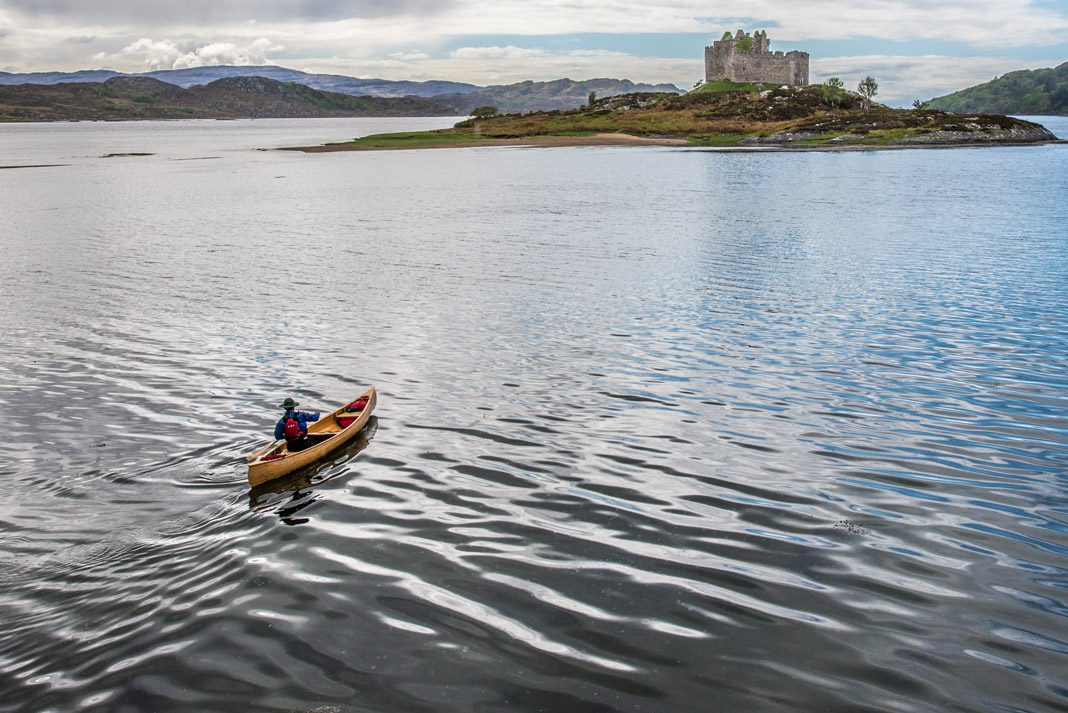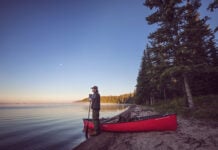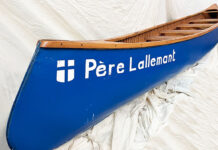Maybe I was the only one bewildered by the news of brothers Kyle Roberts and Tom Schellenberg arriving at Everest Base Camp earlier this year with canoes on their heads.
It was a noble cause they promoted—raising cash for a women’s mental health facility in Kathmandu—and it was certainly an arresting image they created in the process. But in the pantheon of crazy-ass stunts one might do with a canoe to get attention, this one takes the Nepalese cake.
What’s the next epic canoe journey for canoeists?
It got me wondering. How much farther and faster is it possible to go? As our wild places diminish, what waters—or heights or depths—remain unplumbed by a single blade?
Back in the mid-19th century, Sir George Simpson, governor of the Hudson’s Bay Company and his praetorian team of Mohawk paddlers from Kahnawake, paddled from New York City to the Pacific and back with a side trip to York Factory on Hudson Bay.
I’m not sure anyone has ever repeated a 5,000-mile single-year odyssey, though three-time cross-Canada canoeist Mike Ranta and his dog, Spitzii, have given Sir George a run for his money.
In 1934, Peterborough, Ontario’s own John Smith decided he’d paddle to Peterborough, England in a 16-foot cedar-canvas canoe.
Smith’s epic journey didn’t end well. He is buried in southwestern Newfoundland where he and his canoe washed up that summer.
As far as I know, nobody has even dreamt that dream since—except perhaps members of the Pacific Voyagers Project, although their canoes are powered largely by wind.
Holy Grail-like goals
A round-trip, single-season continent crossing or a single-bladed ocean crossing are definitely in the running for most impressive feats a canoeist could accomplish. And if speed is your thing, knocking a few hundredths of a second off any paddling world record would be a worthy Grail-like goal.
Thinking vertically instead of horizontally, let’s remember when Pedro Oliva hucked Salto Belo Falls in Brazil, approaching 100 kilometers per hour in his kayak at the end of the 127-foot freefall before rolling up and joining his pals for a brew on the shore.
Surprisingly—and sadly for Oliva—his record lasted barely a month, smashed by Tyler Bradt when he successfully kayaked over 189-foot Palouse Falls in Washington State.
And while Eric Boomer’s bold first descent of an unnamed waterfall on Greenland’s west coast, documented in the award-winning film Into Twin Galaxies, didn’t rewrite any Guinness records, it proved unequivocally size isn’t everything. He left no room at the top of the pyramid of extreme paddlers.
The search for canoe journeys’ continues
With almost superhuman distances, heights and speeds achieved—what’s left?
Consider for a second the world is going to hell in an environmental handcart, largely because of anthropogenic climate change. Paddlers are perhaps the human dwellers of planet Earth who are most connected to its rivers and oceans.
The next Holy Grail for paddlers could be in bringing public attention to the centrality of water—fresh water, in particular—in our lives.
The records would read differently but be no less heroic in their attainment; most number of school-age children and youth—seniors, tots, middle-agers, boomers, whatever—in canoes in a single season; most number of canoes on the water at one time; largest sums of money raised with canoes or by canoeists for water-related conservation initiatives.
Or, for something a little bit different again, we might follow the example of paddlers on the Sunshine Coast of British Columbia, who laud those with the most consecutive days in a canoe.
Gibsons Paddle Club has a special paddle insignia and key fob for anyone who paddles 100 consecutive days in any calendar year.
This tradition has morphed into the 101 Club, in honor of the 101 Brewhouse and Distillery on B.C.’s Sunshine Coast, which will give you a free meal and an excellent craft beer and a discount for the rest of the year for meeting the challenge and raising the bar.
Nobody says the quest for the Holy Grail of paddling has to be totally altruistic.
James Raffan is an author, recovering academic and former executive director of the Canadian Canoe Museum.
“He who is valiant and pure of spirit may find the Holy Grail in the Castle of Aaargh.”—Monthy Python. Feature Photo: Paul Villecourt









